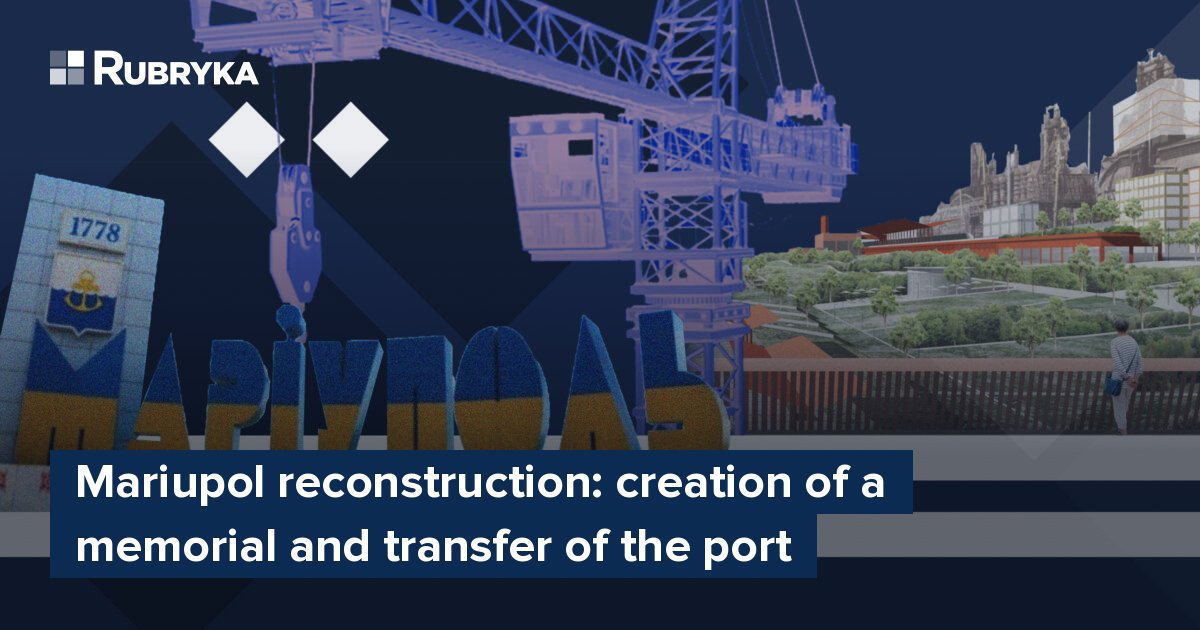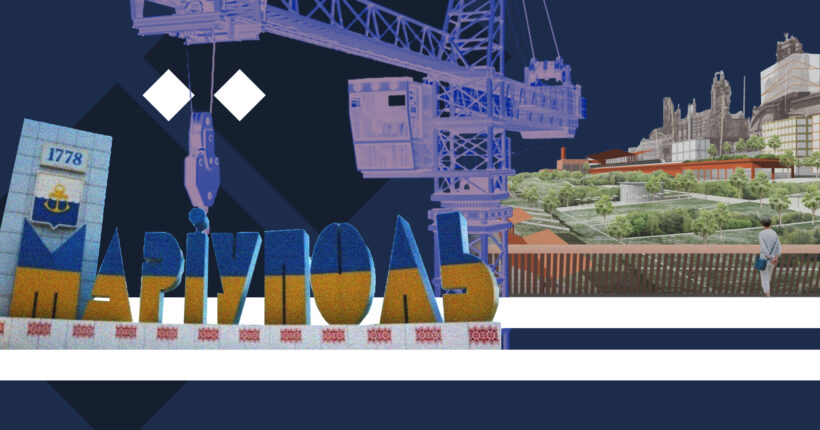
What is the problem?
According to the adviser to the mayor of Mariupol, Petro Andryushchenko, up to 90% of high-rise buildings and up to 60% of buildings in the private sector are not subject to restoration in the city. Despite this, researchers are already working out ways to rebuild Mariupol, considering its peculiarities and the need to more successfully place the future infrastructure that will contribute to the city's development.
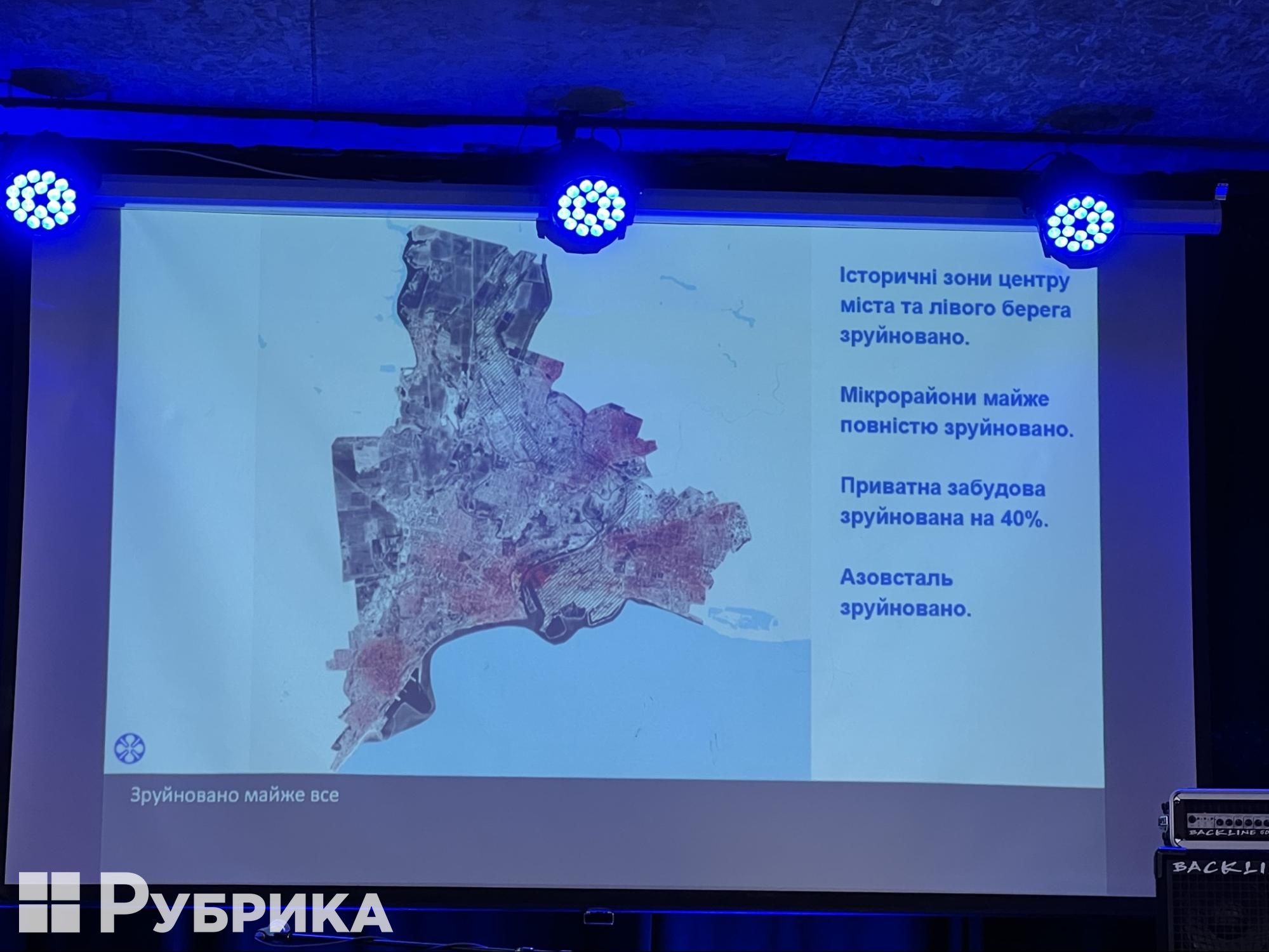
The scale of the destruction of Mariupol.
"It is time not to think about the future but to act now. We have urgent problems, and we need to understand how to solve them to build plans for the long-term perspective with positive changes," said Fulko Treffers, Dutch architect and urban planner, co-founder of the urban coalition "Ro3kvit: Urban Coalition for Ukraine."
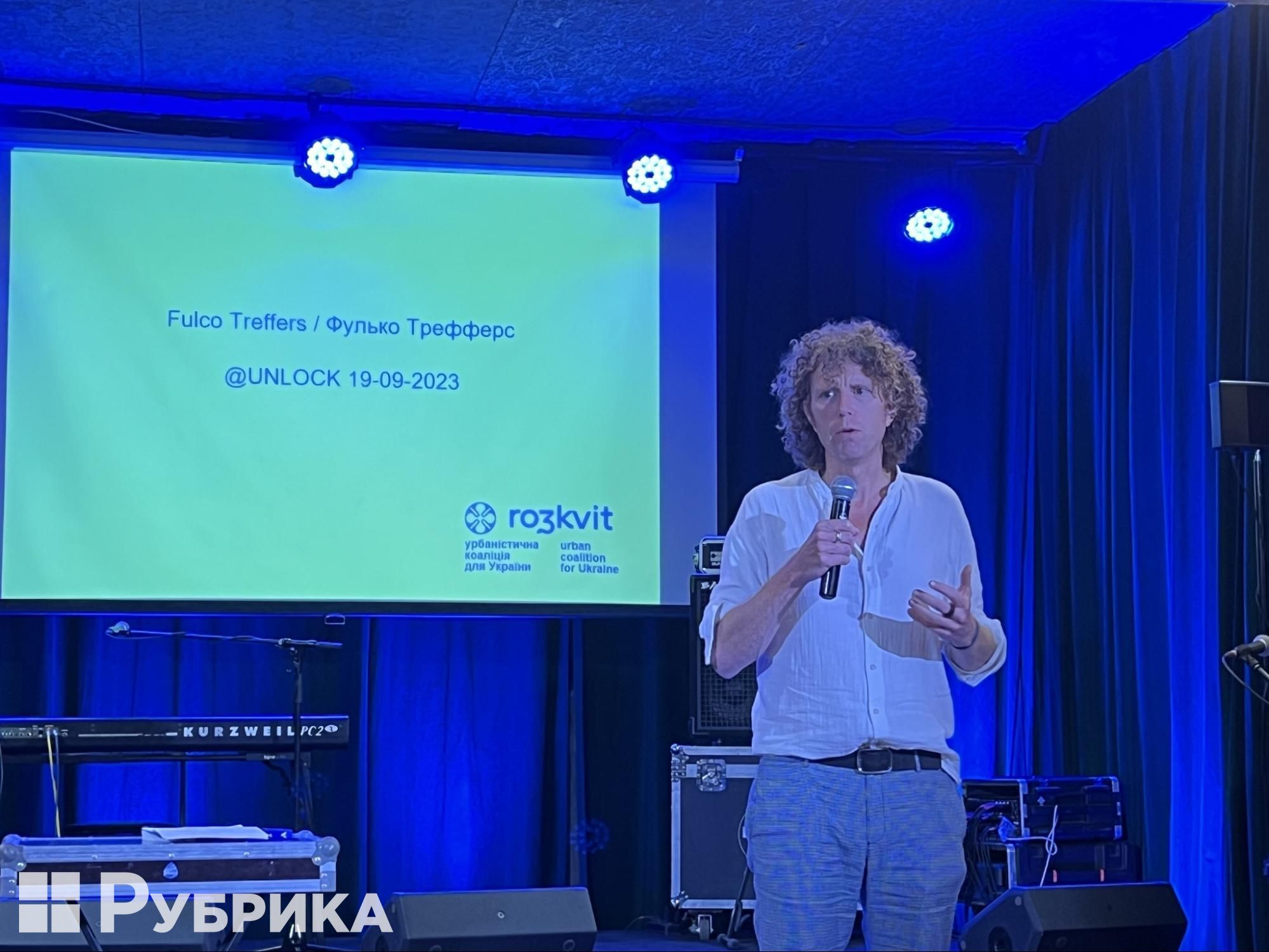
Architect and urban planner Fulko Treffers.
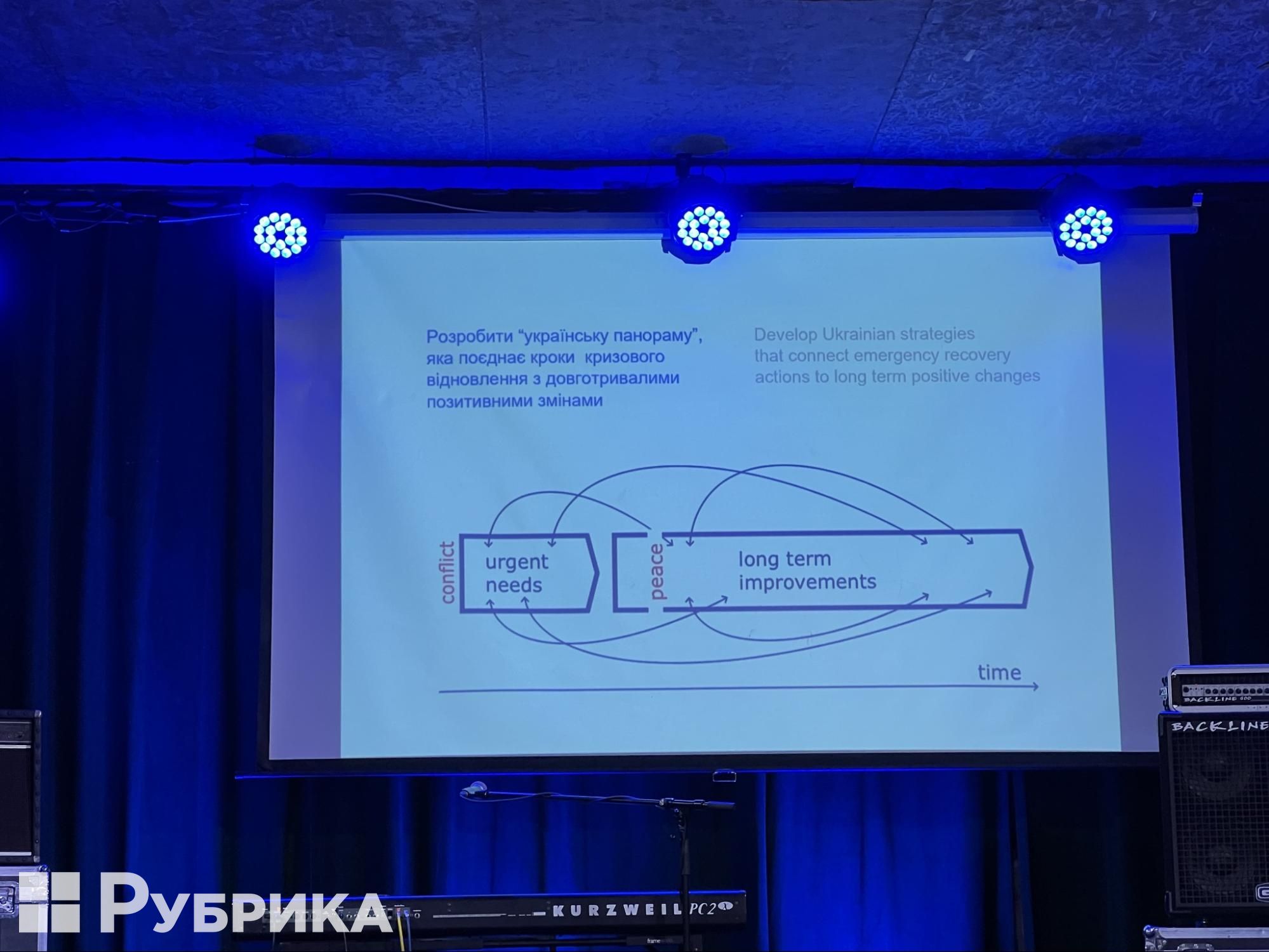
Infographics on Mariupol recovery strategy.
After liberation, the city will need economic stability and development to attract potential residents. At the same time, Mariupol will have to rebuild, modernize, and correct previous mistakes during its construction.
What is the solution?
The Ukrainian team, with the foreign support of the urban coalition "Ro3kvit: Urban Coalition for Ukraine," has been developing a strategy for the post-war spatial development of Mariupol since August 2022. The project envisages the preservation of cultural value and identity, reforming the city's districts, constructing a new economy, and conserving the environment.
Such early planning of the reconstruction of Mariupol allows for an in-depth analysis of the best practices of other countries in post-war reconstruction to identify existing problems and directions for the development of the renewed city. Thanks to this, researchers will be able to make effective decisions.
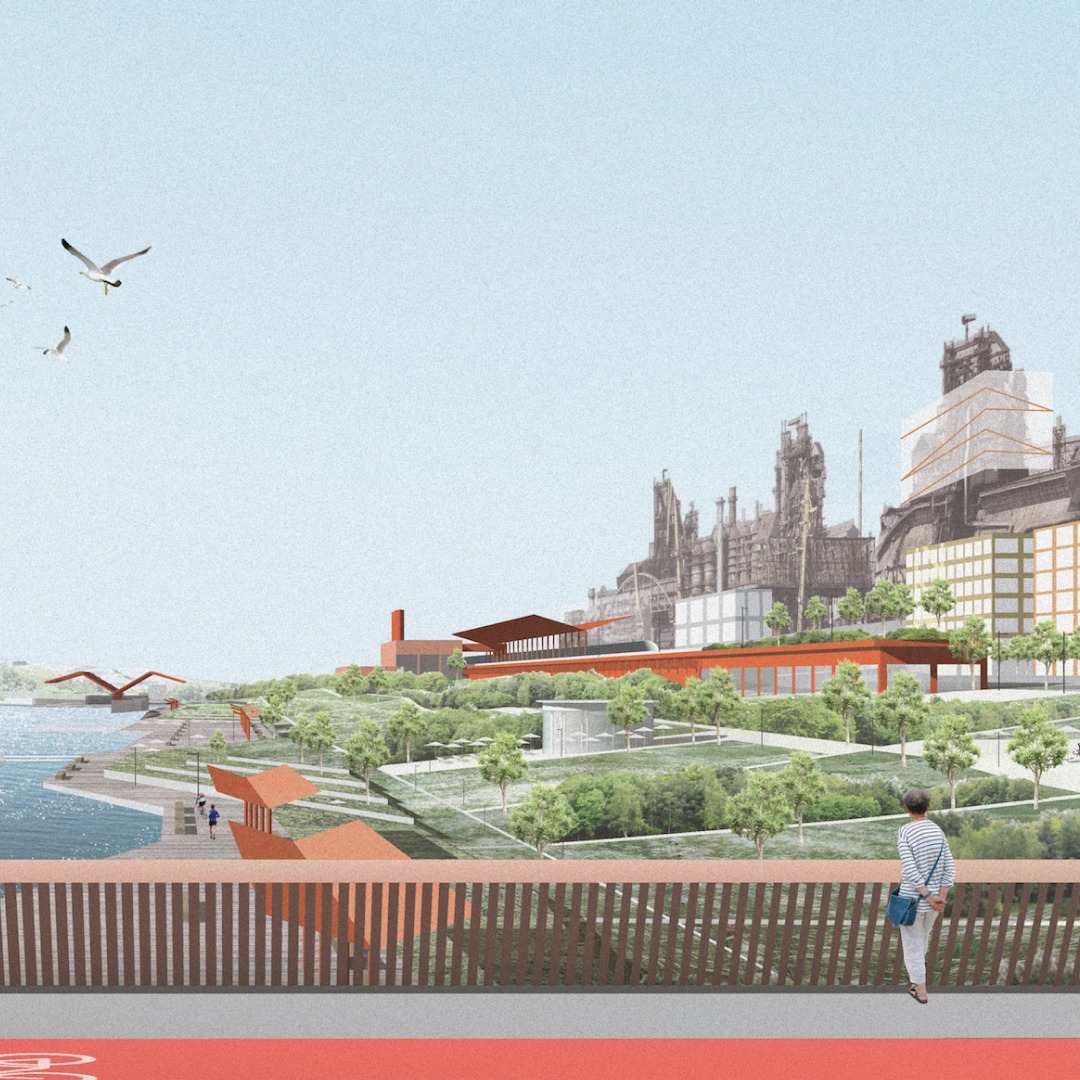
Plan of the restored Mariupol. Photo: Facebook "Ro3kvit: Urban Coalition for Ukraine."
How does it work?
"Ro3kvit: Urban Coalition for Ukraine" started its activities in March 2022. The team comprises more than 80 specialists: researchers, designers, advisers, and teachers, among whom at least 50% are experts from Ukraine.
Nine people from the team worked on the Mariupol restoration project. The Dutch architect Fulko Treffers emphasizes: "It is very dear to me because it is the first city where I worked in Ukraine."
How will the city be restored?
Before starting work on the strategy, the coalition asked itself a straightforward question: "For whom are we doing this?". The answer was hidden behind the understanding that everything planned would not be done for the international media and not for the developers. The real target is those who used to live there and want to return there.
The strategy for the city's return to everyday life was drawn up, taking into account the opinions of Mariupol residents. During their survey, the experts highlighted three key points that are important for people to return to the city after liberation:
- Security
- Home
- Work
Almost half of Mariupol's houses in the neighborhood on the left bank were destroyed. Experts face the task of not only satisfying the above needs of Mariupol residents but also creating something new, modern, and environmentally friendly.
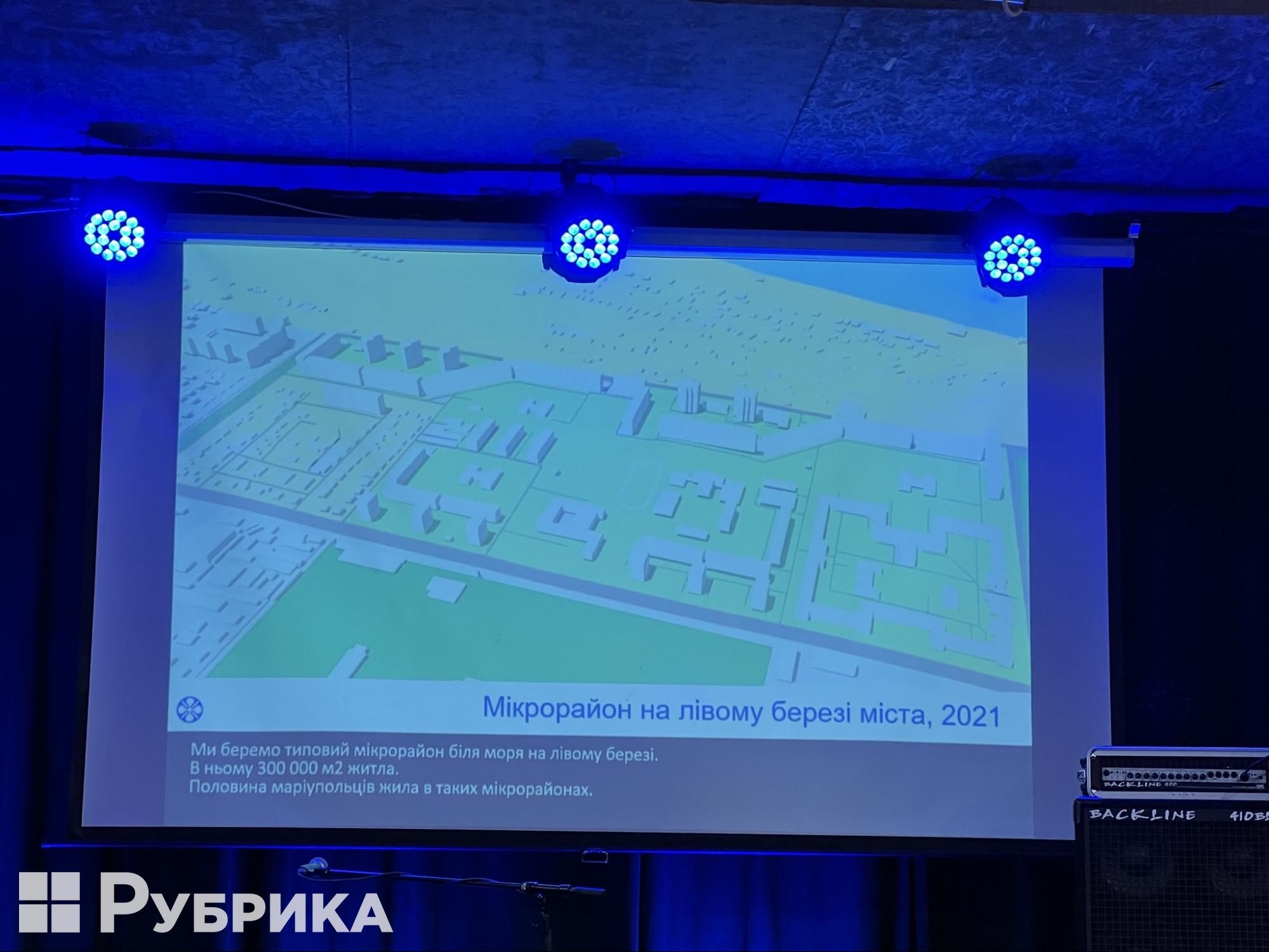
The scheme of the micro-district on the left bank of Mariupol in 2021.
"We know organizations that have similar projects. We are trying to form specific strategies for them in the cities. Sometimes it can be some small projects — a square or a school, or more large-scale," says Treffers.
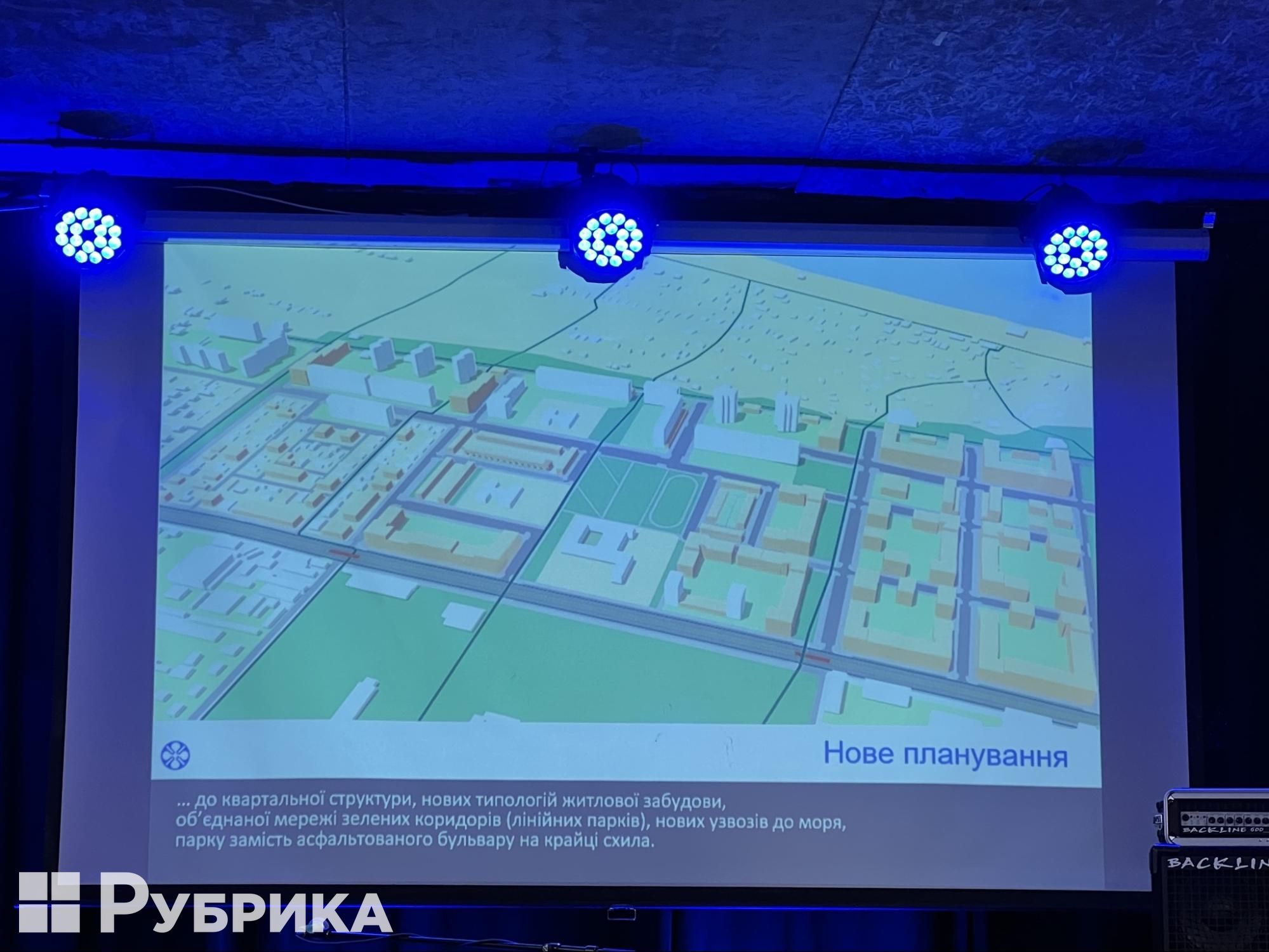
Development planning in Mariupol.
The city plans to build green infrastructure and a transport hub. Some of the houses will be restored, and new ones will be built.
"We already have ideas about the Drama Theater. We want to make a memorial in the city center. This cannot be a place for applause, there must be silence. We plan to hold a competition for the organization of the memorial."
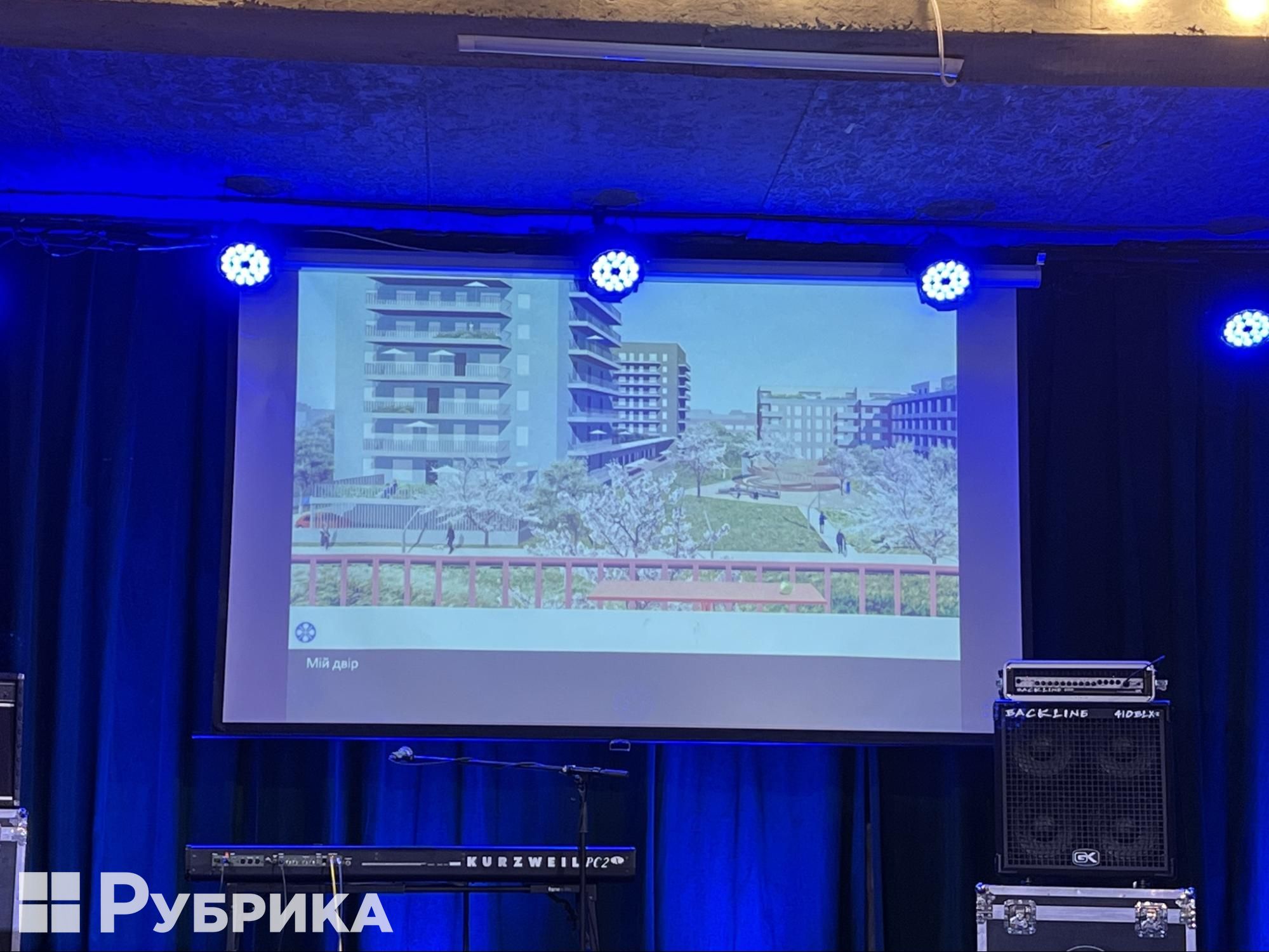
Yard project in Mariupol with restored and new houses.
Restoration will consist of fixing the city's identity to preserve its memory. Therefore, the coalition team began to work on improving the space by forming various zones. During construction and restoration, it is planned to install innovative building structures that will be safe during various threats, including military ones.

Scheme of innovative structures during construction.
Economy in Mariupol after de-occupation
As the architect Fulko Treffers explains, after the war's end and people's return to Mariupol, the city will need to provide social and affordable housing and create jobs. Therefore, experts see the optimal solution in the development of a network of districts that will provide residents with everything they need.
"We are shifting different districts a little bit. Now is the moment when we can correct previous mistakes made during Mariupol's construction," explains Treffers.
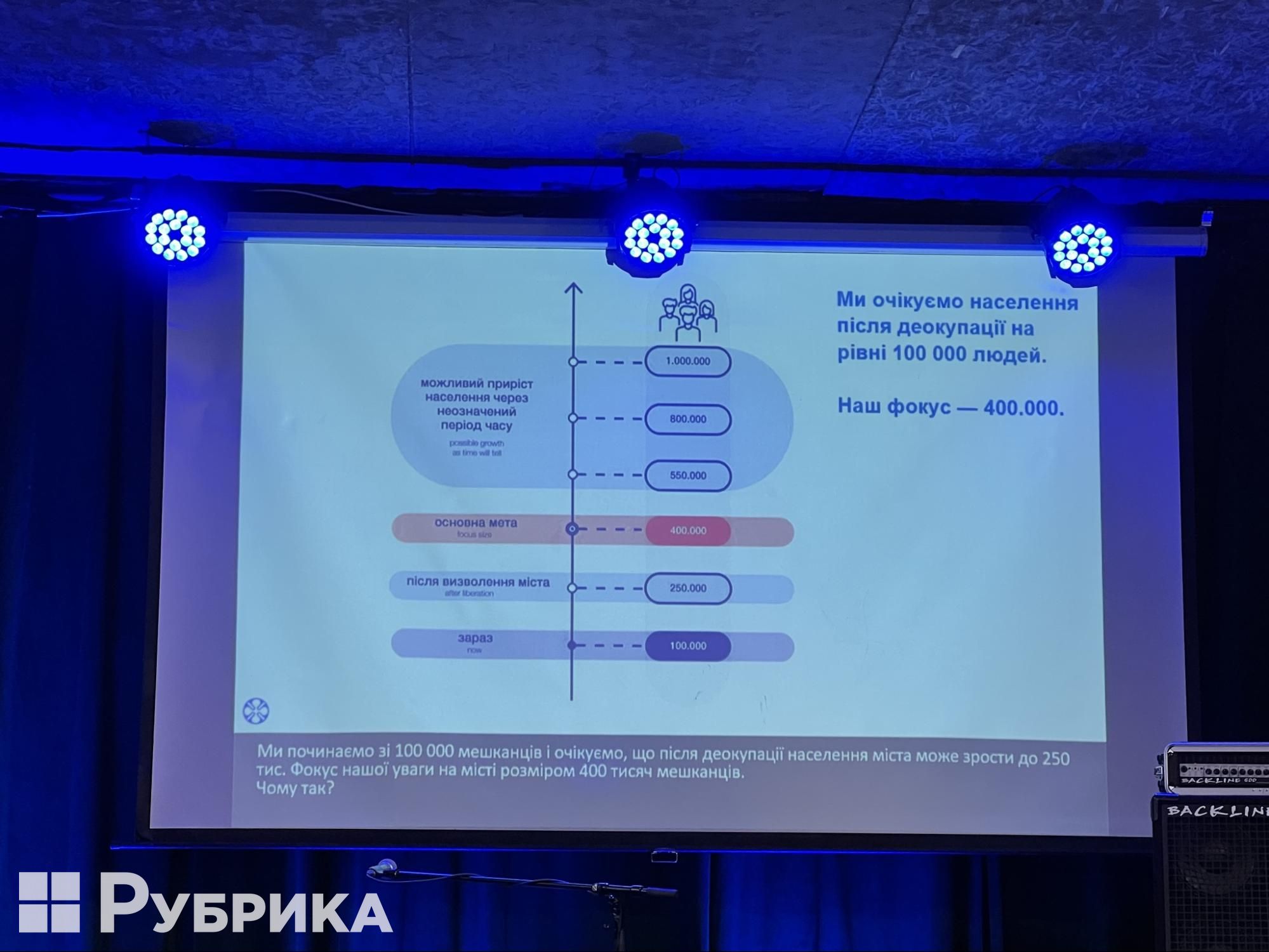
Infographics about Mariupol's population after liberation.
"The question arises as to how much space is needed if the population reaches 250,000 — it all depends on the density of buildings. We have three different plans, roughly designed for 250,000 people. It will be an area roughly like Azovstal, and all 250,000 people will be able to live there. However, it turns out that the rest of the city will be a ghetto where no one lives," says the expert.
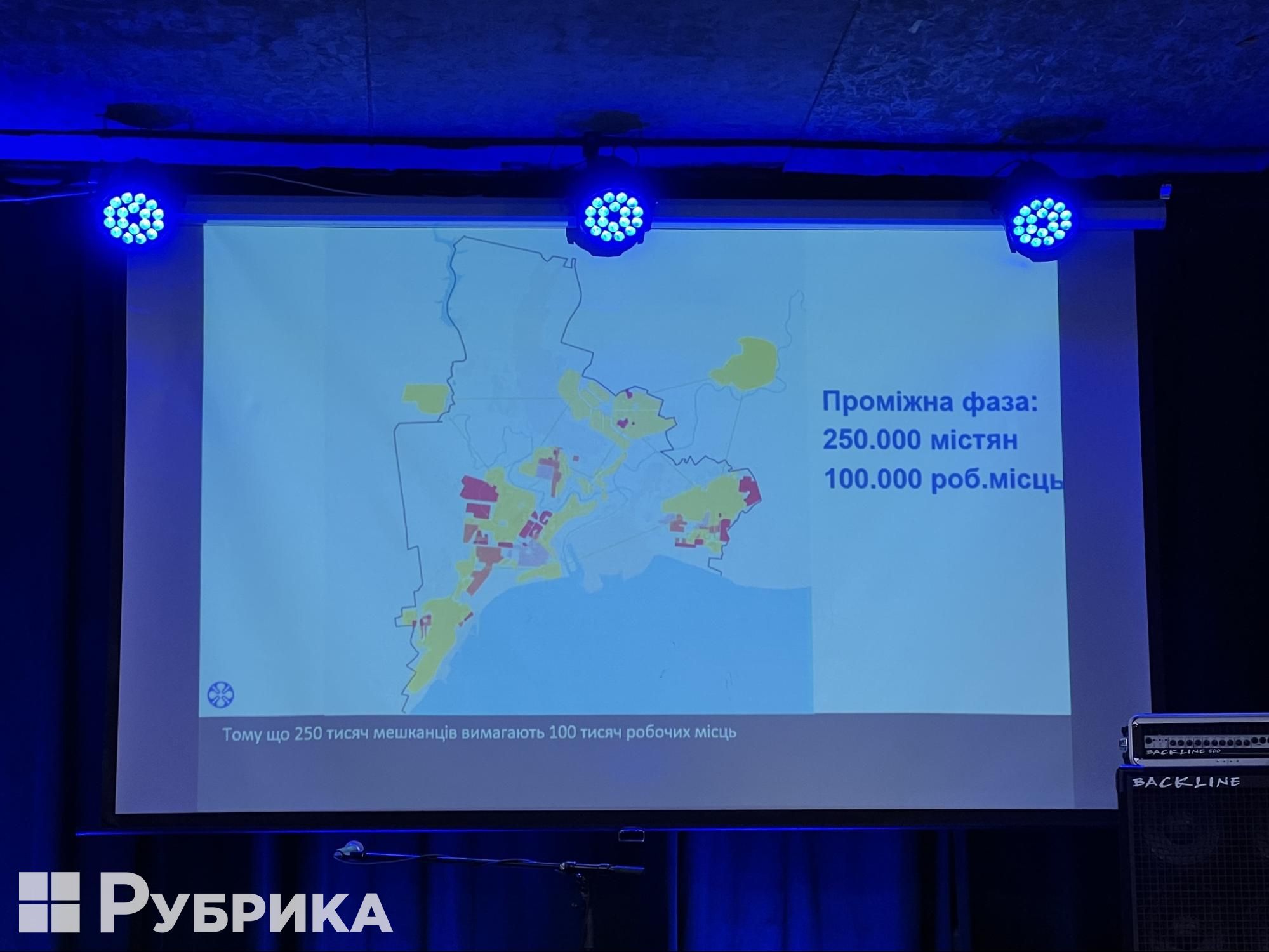
Infographic about the need for jobs in Mariupol.
The researchers pay special attention to the development of the city's economy, which will ensure the stability of Mariupol in the future. They want to transfer the monocity model to a multi-economy. In addition to steel production, its main pillars will be logistics, building structures, tourism, clean industries, education, medicine, and the military sector.
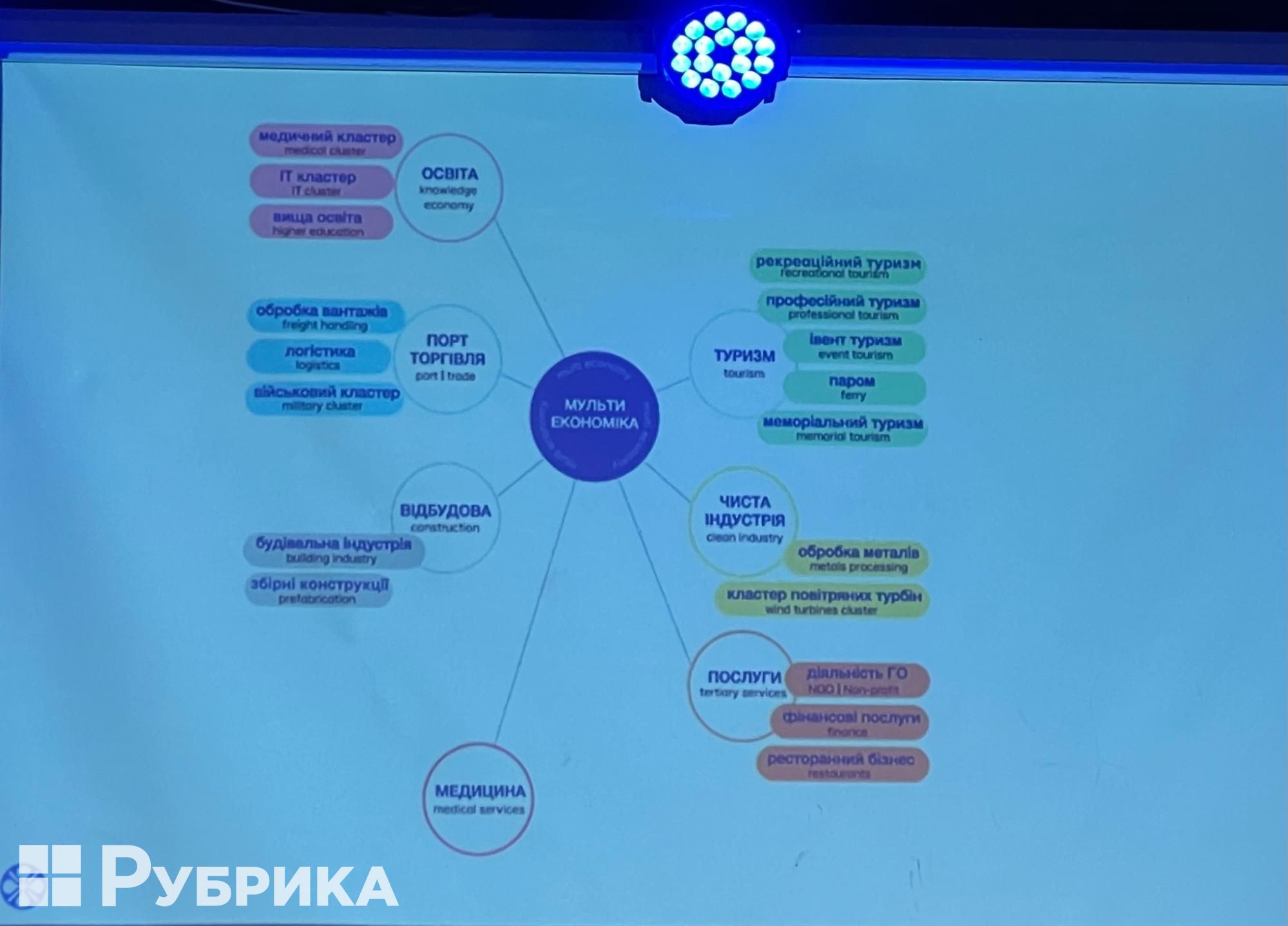
Scheme of multi-economy in Mariupol.
They want to move the port in Mariupol and build a new one. Part of it can be located on the Azovstal plant. Relocating parts of the old port will take ten years, but at the same time, it will continue to operate until its complete relocation.
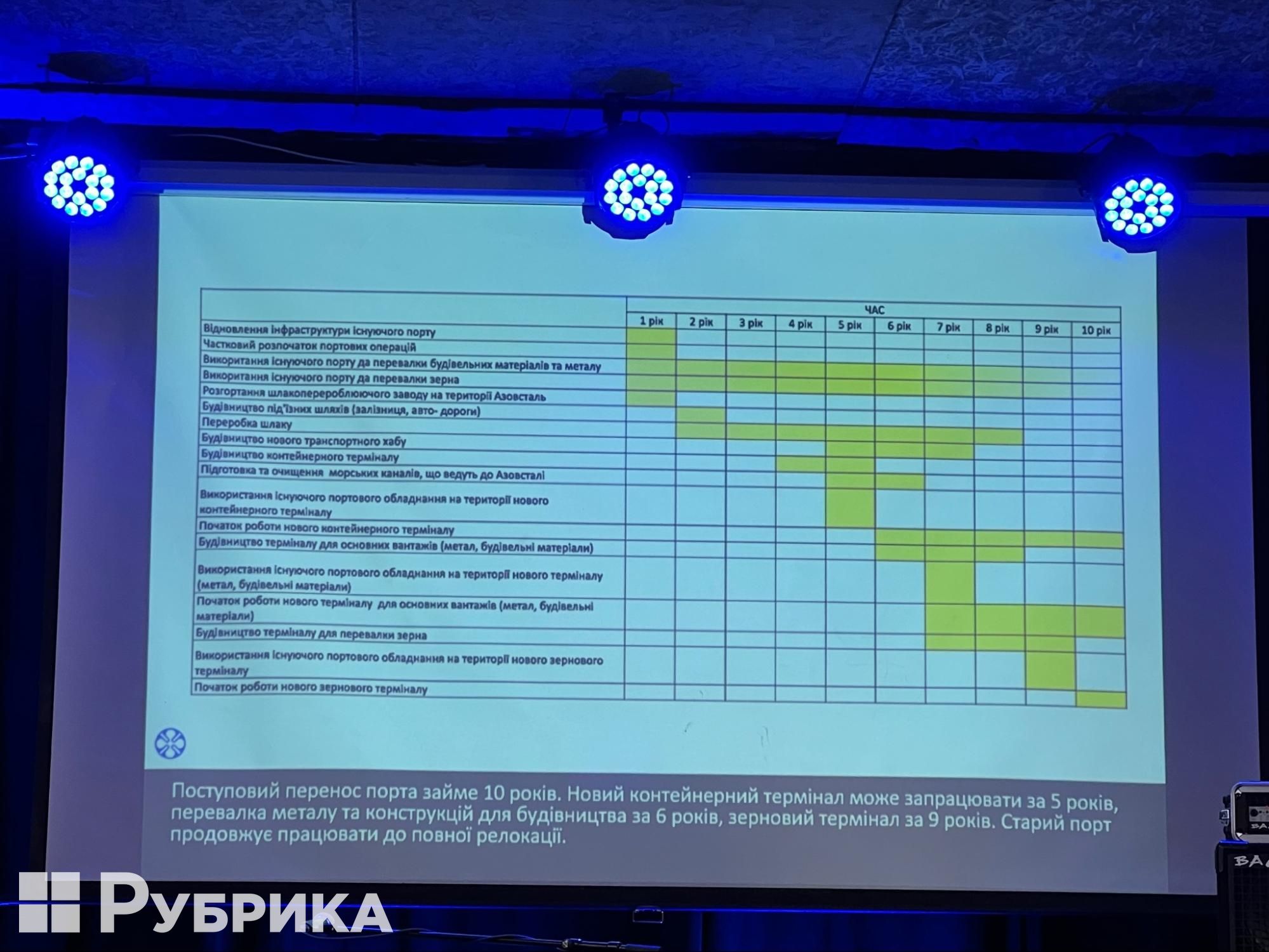
Mariupol port relocation plan by year.
Also, the coalition focuses on the fact that Mariupol is a city by the sea, but 40 to 60% of the city's residents had to go to other areas to reach the coastline. With the relocation of the port and the development of areas near the coast, access to the sea will become easier.
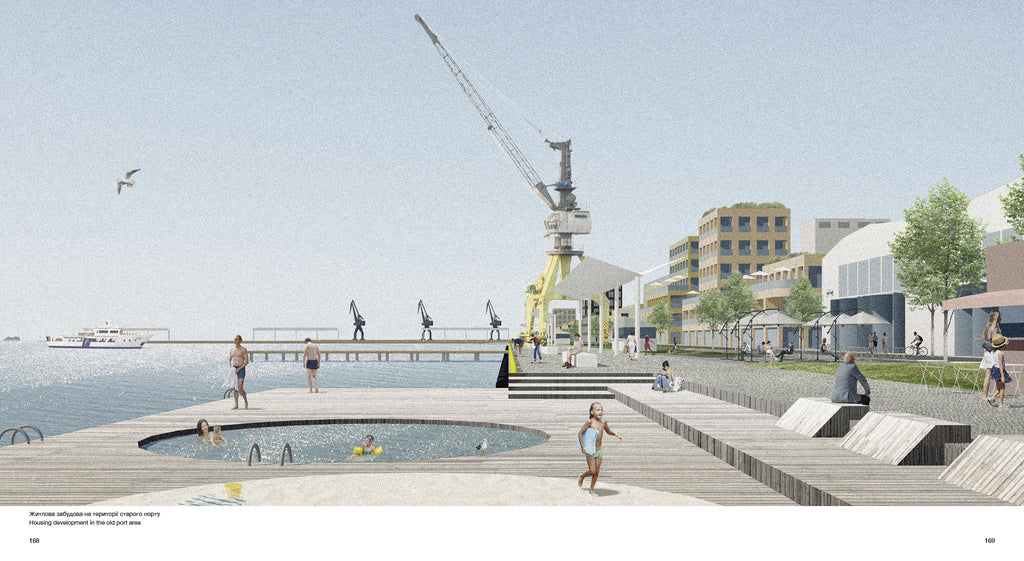
A page from the book "Vision of Mariupol." Photo: from the website of the publishing house dom-publishers.com
"If you look at the economy, it plays an important role. For example, steel production does not affect the environment very much, but there are two zones for steel production. Azovstal is so destroyed that it cannot be rebuilt as it was. Despite the tragedy of the situation, we should use this situation to do better. We need to concentrate harmful industries in the northern part of the city, where there are few residential buildings, schools, parks, and public areas, to make it safer for people."
At the end of his speech, the co-founder of "Ro3kvit: Urban Coalition for Ukraine," Fulko Treffers, added that you could read more about the reconstruction of Mariupol in the book "Vision of Mariupol." He emphasized that the interviewed residents spoke about the fact that it is important for them to live comfortably in the city. This is the basis for the city's reconstruction and its transformation into an economically developed region.

"Ми тут є і будемо тут далі жити": як громада на Сумщині розвивається попри щоденні обстріли

"Наше відновлення маємо планувати вже зараз": як прикордонна громада живе сьогодні й будує майбутнє



